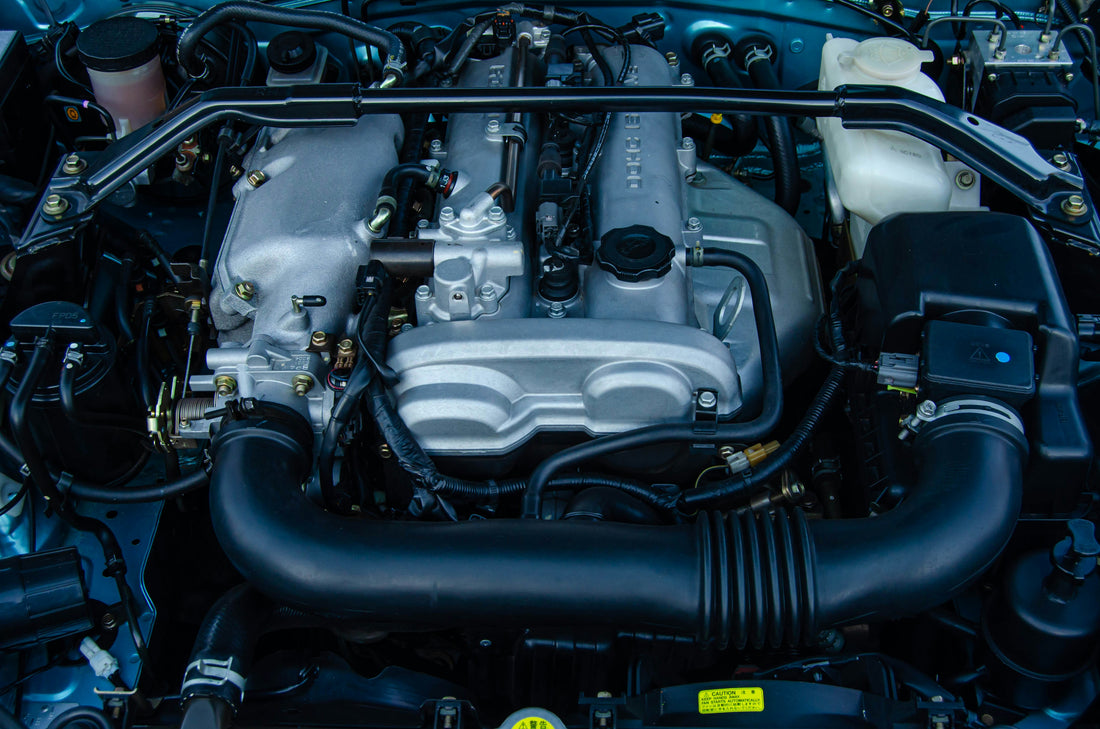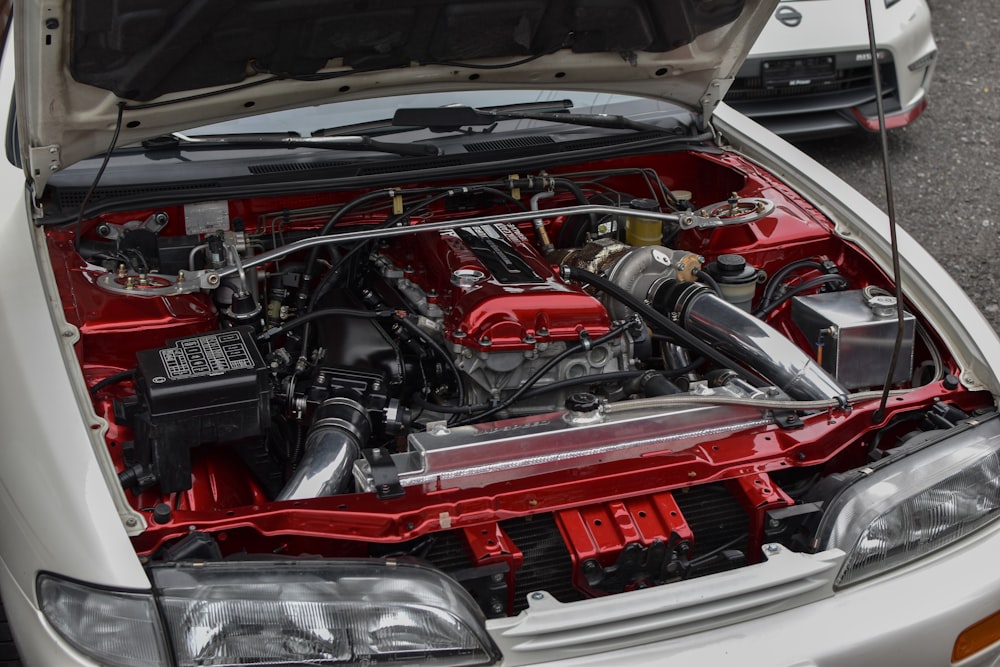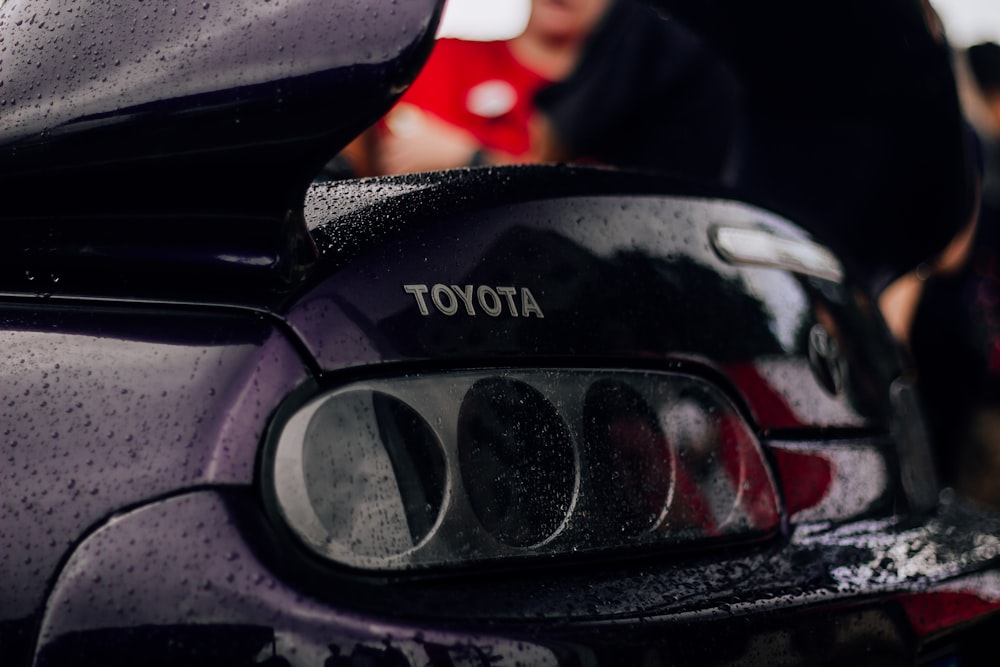JDM or Japanese Domestic Market is a signifier of where the vehicle was manufactured which ultimately leads to the specific engine details it might have. A JDM vehicle is a car that was originally designed, manufactured, and sold for the Japanese market.
These vehicles usually boast specs, features, and styling that cater to the preferences and regulations of the Japanese home market rather than vehicles created for export or non-Japanese markets.
Some such characteristics that JDM vehicles might include are right-hand drive (RHD), trim levels unique to the market, engines that are easily matched to the JDM market, and options that you likely won't find on vehicles constructed in other countries.
Because of their distinctive design and one-of-a-kind features, JDM vehicles have gained popularity outside Japan. Car enthusiasts often import them to other countries through various processes, depending on the regulations of the destination country. When people refer to a car as JDM, they are probably referring to the engine, style and other specifications that come with vehicles designed for the Japanese market.
It's important to note that not all Japanese cars are considered JDM. Japanese automakers also manufacture vehicles for export to various countries, and those models may have different specifications and features to comply with the regulations and preferences of those markets. JDM vehicles, however, are those specifically intended for sale within Japan. This blog post will walk you through maintenance tips for your JDM vehicle, as well as information regarding the differences in routine and preventative maintenance, as compared to cars from other markets.
DIY Maintenance Tips for JDM vehicles
When you own a vehicle, JDM or otherwise, it's important to take care of it for the best performance and longevity. Consistent car maintenance involves a variety of tasks, and you must carry them out routinely. For that reason, having a demand maintenance checklist can keep you on track so that you can carry out the various responsibilities associated with car ownership on a consistent and timely basis. Following are some of the top DIY maintenance tips for your JDM vehicle.
Fluid Checks are Vital
One vital step to consistent maintenance of your JDM vehicle is to check fluid levels regularly to ensure proper and efficient performance. Don't underestimate the value of automotive fluids as they greatly affect engine longevity and a lack of them can cause catastrophic engine damage.
Fluids include oil, transmission fluid, antifreeze (in the appropriate season), windshield washer, engine coolant, brake fluid, power steering fluid, and differential fluid. Some fluids, such as your engine oil, will need to be drained and changed regularly for the best engine performance. Your owner's manual will tell you how often your fluids need to be checked or changed for proper lubrication and your maintenance schedules should reflect this.
Check for Wear and Tear
Some components of your JDM vehicle will need to be replaced because regular use will cause wear and tear. Some examples include brake pads, tires and suspension parts. Engine belts, serpentine belts, and spark plugs are other parts that wear out with use and should checked regularly for performance and safety reasons. For example, bad brakes can lead to slower stopping times, which can result in collisions, as well as costly repairs and risk of injury.
Maintain the Cooling System
Because JDM cars often have high-performance engines, they are more prone to overheating. For that reason, coolant system maintenance is a vital part of owning a JDM vehicle. To prevent overheating and the issues that go with it, you should check and maintain your cooling system regularly, which includes checking the water, engine coolant level and pumps. Manufacturers recommend having a coolant flush done regularly.
Watch for Electrical Issues
Unless you are a JDM mechanic, diagnosing electrical issues can be a challenge. However, you can undertake electrical maintenance by having your car checked anytime you worry that there's some kind of problem happening. Be sure to find a reputable mechanic with experience working on JDM engines.
Take Action when the Check Engine Light Comes On
Anytime your check engine light comes on, something is going on that you need to pay attention to. It could be as simple as a loose gas cap or a dirty air filter but could also mean there's a potential issue with the engine itself, which requires repairs. Anytime that light comes on, get your vehicle to a care shop to be checked out.
Keep It Clean and Detailed
Like all vehicles, JDM cars are prone to rust and corrosion, so keep the exterior surfaces of the car clean and well-maintained at all times to prevent costly repairs in the future.
Washing the outside of your car to remove dirt and road debris that stick to it in various environmental conditions is the best way to do this, which is great for preserving the car, but also creating that exterior shine that makes it special. Regular cleaning also enables you to check fir signs of damage to the paintwork.
Likewise, keeping the interior clean maintains the value of the car, even if it doesn't play a role in performance. Having the right tools and supplies on hand makes this process easier. That includes car shampoo, microfiber towels, buckets, brushes, a clay bar or clay mitt, polish and wax.
Evaluate Your Driving Habits
The way you treat your car on the road is going to impact its longevity and the quality of its performance. Taking care to avoid aggressive driving will help preserve the engine and engine components and reduce engine wear and tear over time, as well as prevent diminished power and prevent unexpected breakdowns. It might also improve the fuel economy of the vehicle and cut down on how often you have to change vital parts, such as the oil filters, brake pads and spark plugs.
Store Your Vehicle Properly
If you don't drive your JDM car during the winter or during other seasons, it's best to store it properly. This preserves the internal mechanics, as well as the exterior body of the vehicle. Make sure it's cleaned and maintained before storage and choose a place that will keep the car safe, without extreme fluctuations in temperature and out of the weather.
Consider Upgrading the Parts
An often overlooked care tip is to upgrade parts and pieces of the car. Many JDM cars, when bought off the lot, have the basic parts and you can improve the performance and appearance of the vehicle by upgrading to higher-quality components. It's also a good way to increase the reliability of the car. This can be a DIY fix, but if you lack the knowledge and experience, you should partner with a professional.
Regular Servicing
Your owner manual will specify recommendations when servicing should be carried out by a professional mechanic. This can be based on vehicle age or mileage on the clock.
The age of vehicles is an important factor in when engine tune-ups are required. The older the car, the more detailed and intensive your preventative maintenance checklist is likely to be.
Tires
Correct care should be afforded to the tires. Air pressure should be as detailed by the owner manual and the tread should be checked regularly to ensure they are within legal limits.
If tires need replacing, they should be according to the owner manual's suggestions. There are optimal combinations of a mix of old and new tires to keep front, rear and both sides in balance.
Do JDM Vehicles Require Different Maintenance?
Japanese Domestic Market vehicles may have some differences when it comes to regular maintenance, as compared to vehicles designed for other markets. Here are some things to keep in mind as you care for the key components of your car.
Parts Availability
Some JDM vehicles have parts that you will only be able to find on the Japanese market. Although some popular models may have parts that are readily available internationally, you will likely find that some of them will be more challenging to find outside Japan.
Right-Hand Drive (RHD) Vehicles
Many JDM vehicles have right-hand drive, which is different from the left-hand drive vehicles commonly found in many other countries. While this doesn't necessarily affect basic maintenance, it might be a consideration for certain repairs or modifications.
Emission and Safety Standards
JDM vehicles may adhere to emission and safety standards that are not the same as those in other countries. When importing a JDM vehicle to a country with different standards, it may be necessary to make modifications to the engine compartment to ensure that the vehicle meets all local regulations.
Documentation and Information
When it comes to cars from the Japanese market, you can likely expect that repair manuals and technical documentation may be in Japanese. This can be a challenge for mechanics who are not familiar with the language, but many popular JDM models have extensive support and aftermarket documentation available in other languages, including a preventative maintenance checklist and a variety of comprehensive car maintenance tips.
Cultural Differences
Some JDM vehicles may have features or technologies that are common or popular in Japan, but will be unfamiliar in other markets. Some of these may require specific attention during maintenance. For example, certain engine technologies or electronic systems might be unique to JDM models.
Fluids and Specifications
Some JDM vehicles may have specific fluids or specifications that differ from those in other markets. It's essential to use the correct fluids and always follow the manufacturer's recommendations for maintenance.
Summary
Owning and driving a JDM vehicle can be a rewarding and enjoyable experience that will be that much better by taking proper care of your car. While JDM vehicles may have some unique aspects, many popular models are well-supported globally, and maintenance may not be significantly different from other vehicles.
If you're considering purchasing or maintaining a JDM vehicle, it's crucial to research and ensure that you have access to the necessary parts and information for proper maintenance in your location. Consulting with a knowledgeable mechanic or automotive expert familiar with JDM vehicles like JDM West Coast can also be beneficial. Above all, paying attention to your car and taking note of any potential problems that give you clues about maintenance needs, and having them remedied right away is your best tip for keeping the car looking and driving its best.


